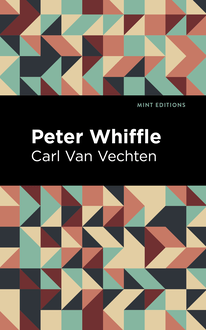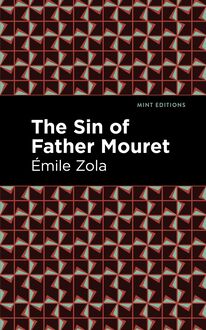-
 Univers
Univers
-
 Ebooks
Ebooks
-
 Livres audio
Livres audio
-
 Presse
Presse
-
 Podcasts
Podcasts
-
 BD
BD
-
 Documents
Documents
-
- Cours
- Révisions
- Ressources pédagogiques
- Sciences de l’éducation
- Manuels scolaires
- Langues
- Travaux de classe
- Annales de BEP
- Etudes supérieures
- Maternelle et primaire
- Fiches de lecture
- Orientation scolaire
- Méthodologie
- Corrigés de devoir
- Annales d’examens et concours
- Annales du bac
- Annales du brevet
- Rapports de stage
La lecture à portée de main
Vous pourrez modifier la taille du texte de cet ouvrage
Découvre YouScribe en t'inscrivant gratuitement
Je m'inscrisDécouvre YouScribe en t'inscrivant gratuitement
Je m'inscrisEn savoir plus
Vous pourrez modifier la taille du texte de cet ouvrage
En savoir plus

Description
The Fortune of the Rougons (1871) is a novel by French author Émile Zola. The first of twenty volumes of Zola’s monumental Les Rougon-Macquart series is an epic story of family, politics, class, and history that traces the disparate paths of several French citizens raised by the same mother. Spanning the entirety of the French Second Empire, Zola provides a sweeping portrait of change that refuses to shy away from controversy and truth as it gets to the heart of heredity and human nature. Adelaide Fouque is a woman of Plassans, a town in southern France. Alongside her son Pierre Rougon, whose deceased father was her husband, Adelaide raises the Macquart siblings, her children from a brief, passionate affair. Despite their shared upbringing, the three children take vastly diverging paths in life. Pierre, desperate to prove his legitimacy, becomes an ambitious middle-class man whose deepest desire is to win favor with the aristocracy and to climb even further from his humble roots. Meanwhile, his half siblings struggle to make a living for themselves and their working-class families. As Pierre’s ambitions lead him to not only disinherit the Macquarts, but to position himself as a supporter of Napoleon III in his attempt to overthrow the French government. At the same time, Silvère Mouret, Adelaide’s grandson, and his lover Miette Chantegreil find themselves on the side of the republicans who attempt to resist Napoleon’s coup. The Fortune of the Rougons is a story of family and fate, a thrilling and detailed novel that sets up a world rich enough for its author to explore in nineteen subsequent volumes. With a beautifully designed cover and professionally typeset manuscript, this edition of Émile Zola’s The Fortune of the Rougons is a classic work of French literature reimagined for modern readers.
Sujets
Informations
| Publié par | Mint Editions |
| Date de parution | 28 mai 2021 |
| Nombre de lectures | 0 |
| EAN13 | 9781513286099 |
| Langue | English |
Informations légales : prix de location à la page 0,0500€. Cette information est donnée uniquement à titre indicatif conformément à la législation en vigueur.
Extrait
The Fortune of the Rougons
Émile Zola
The Fortune of the Rougons was first published in 1871.
This edition published by Mint Editions 2021.
ISBN 9781513281070 | E-ISBN 9781513286099
Published by Mint Editions®
minteditionbooks.com
Publishing Director: Jennifer Newens
Design & Production: Rachel Lopez Metzger
Project Manager: Micaela Clark
Translated by Ernest Alfred Vizetelly
Typesetting: Westchester Publishing Services
C ONTENTS I II III IV V VI VII
I
On quitting Plassans by the Rome Gate, on the southern side of the town, you will find, on the right side of the road to Nice, and a little way past the first suburban houses, a plot of land locally known as the Aire Saint-Mittre.
This Aire Saint-Mittre is of oblong shape and on a level with the footpath of the adjacent road, from which it is separated by a strip of trodden grass. A narrow blind alley fringed with a row of hovels borders it on the right; while on the left, and at the further end, it is closed in by bits of wall overgrown with moss, above which can be seen the top branches of the mulberry-trees of the Jas-Meiffren—an extensive property with an entrance lower down the road. Enclosed upon three sides, the Aire Saint-Mittre leads nowhere, and is only crossed by people out for a stroll.
In former times it was a cemetery under the patronage of Saint-Mittre, a greatly honoured Provencal saint; and in 1851 the old people of Plassans could still remember having seen the wall of the cemetery standing, although the place itself had been closed for years. The soil had been so glutted with corpses that it had been found necessary to open a new burial-ground at the other end of town. Then the old abandoned cemetery had been gradually purified by the dark thick-set vegetation which had sprouted over it every spring. The rich soil, in which the gravediggers could no longer delve without turning up some human remains, was possessed of wondrous fertility. The tall weeds overtopped the walls after the May rains and the June sunshine so as to be visible from the high road; while inside, the place presented the appearance of a deep, dark green sea studded with large blossoms of singular brilliancy. Beneath one’s feet amidst the close-set stalks one could feel that the damp soil reeked and bubbled with sap.
Among the curiosities of the place at that time were some large pear-trees, with twisted and knotty boughs; but none of the housewives of Plassans cared to pluck the large fruit which grew upon them. Indeed, the townspeople spoke of this fruit with grimaces of disgust. No such delicacy, however, restrained the suburban urchins, who assembled in bands at twilight and climbed the walls to steal the pears, even before they were ripe.
The trees and the weeds with their vigorous growth had rapidly assimilated all the decomposing matter in the old cemetery of Saint-Mittre; the malaria rising from the human remains interred there had been greedily absorbed by the flowers and the fruit; so that eventually the only odour one could detect in passing by was the strong perfume of wild gillyflowers. This had merely been a question of a few summers.
At last the townspeople determined to utilise this common property, which had long served no purpose. The walls bordering the roadway and the blind alley were pulled down; the weeds and the pear-trees uprooted; the sepulchral remains were removed; the ground was dug deep, and such bones as the earth was willing to surrender were heaped up in a corner. For nearly a month the youngsters, who lamented the loss of the pear-trees, played at bowls with the skulls; and one night some practical jokers even suspended femurs and tibias to all the bell-handles of the town. This scandal, which is still remembered at Plassans, did not cease until the authorities decided to have the bones shot into a hole which had been dug for the purpose in the new cemetery. All work, however, is usually carried out with discreet dilatoriness in country towns, and so during an entire week the inhabitants saw a solitary cart removing these human remains as if they had been mere rubbish. The vehicle had to cross Plassans from end to end, and owing to the bad condition of the roads fragments of bones and handfuls of rich mould were scattered at every jolt. There was not the briefest religious ceremony, nothing but slow and brutish cartage. Never before had a town felt so disgusted.
For several years the old cemetery remained an object of terror. Although it adjoined the main thoroughfare and was open to all comers, it was left quite deserted, a prey to fresh vegetable growth. The local authorities, who had doubtless counted on selling it and seeing houses built upon it, were evidently unable to find a purchaser. The recollection of the heaps of bones and the cart persistently jolting through the streets may have made people recoil from the spot; or perhaps the indifference that was shown was due to the indolence, the repugnance to pulling down and setting up again, which is characteristic of country people. At all events the authorities still retained possession of the ground, and at last forgot their desire to dispose of it. They did not even erect a fence round it, but left it open to all comers. Then, as time rolled on, people gradually grew accustomed to this barren spot; they would sit on the grass at the edges, walk about, or gather in groups. When the grass had been worn away and the trodden soil had become grey and hard, the old cemetery resembled a badly-levelled public square. As if the more effectually to efface the memory of all objectionable associations, the inhabitants slowly changed the very appellation of the place, retaining but the name of the saint, which was likewise applied to the blind alley dipping down at one corner of the field. Thus there was the Aire Saint-Mittre and the Impasse Saint-Mittre.
All this dates, however, from some considerable time back. For more than thirty years now the Aire Saint-Mittre has presented a different appearance. One day the townspeople, far too inert and indifferent to derive any advantage from it, let it, for a trifling consideration, to some suburban wheelwrights, who turned it into a wood-yard. At the present day it is still littered with huge pieces of timber thirty or forty feet long, lying here and there in piles, and looking like lofty overturned columns. These piles of timber, disposed at intervals from one end of the yard to the other, are a continual source of delight to the local urchins. In some places the ground is covered with fallen wood, forming a kind of uneven flooring over which it is impossible to walk, unless one balance one’s self with marvellous dexterity. Troops of children amuse themselves with this exercise all day long. You will see them jumping over the big beams, walking in Indian file along the narrow ends, or else crawling astride them; various games which generally terminate in blows and bellowings. Sometimes, too, a dozen of them will sit, closely packed one against the other, on the thin end of a pole raised a few feet from the ground, and will see-saw there for hours together. The Aire Saint-Mittre thus serves as a recreation ground, where for more than a quarter of a century all the little suburban ragamuffins have been in the habit of wearing out the seats of their breeches.
The strangeness of the place is increased by the circumstance that wandering gipsies, by a sort of traditional custom always select the vacant portions of it for their encampments. Whenever any caravan arrives at Plassans it takes up its quarters on the Aire Saint-Mittre. The place is consequently never empty. There is always some strange band there, some troop of wild men and withered women, among whom groups of healthy-looking children roll about on the grass. These people live in the open air, regardless of everybody, setting their pots boiling, eating nameless things, freely displaying their tattered garments, and sleeping, fighting, kissing, and reeking with mingled filth and misery.
The field, formerly so still and deserted, save for the buzzing of hornets around the rich blossoms in the heavy sunshine, has thus become a very rowdy spot, resounding with the noisy quarrels of the gipsies and the shrill cries of the urchins of the suburb. In one corner there is a primitive saw-mill for cutting the timber, the noise from which serves as a dull, continuous bass accompaniment to the sharp voices. The wood is placed on two high tressels, and a couple of sawyers, one of whom stands aloft on the timber itself, while the other underneath is half blinded by the falling sawdust, work a large saw to and fro for hours together, with rigid machine-like regularity, as if they were wire-pulled puppets. The wood they saw is stacked, plank by plank, along the wall at the end, in carefully arranged piles six or eight feet high, which often remain there several seasons, and constitute one of the charms of the Aire Saint-Mittre. Between these stacks are mysterious, retired little alleys leading to a broader path between the timber and the wall, a deserted strip of verdure whence only small patches of sky can be seen. The vigorous vegetation and the quivering, deathlike stillness of the old cemetery still reign in this path. In all the country round Plassans there is no spot more instinct with languor, solitude, and love. It is a most delightful place for love-making. When the cemetery was being cleared the bones must have been heaped up in this corner; for even to-day it frequently happens that one’s foot comes across some fragment of a skull lying concealed in the damp turf.
Nobody, however, now thinks of the bodies that once slept under that turf. In the daytime only the children go behind the piles of wood when playing at hide and seek. The green path remains virginal, unknown to others who see nought but the wood-yard crowded with timber and grey with dust. In the morni
-
 Univers
Univers
-
 Ebooks
Ebooks
-
 Livres audio
Livres audio
-
 Presse
Presse
-
 Podcasts
Podcasts
-
 BD
BD
-
 Documents
Documents
-
Jeunesse
-
Littérature
-
Ressources professionnelles
-
Santé et bien-être
-
Savoirs
-
Education
-
Loisirs et hobbies
-
Art, musique et cinéma
-
Actualité et débat de société
-
Jeunesse
-
Littérature
-
Ressources professionnelles
-
Santé et bien-être
-
Savoirs
-
Education
-
Loisirs et hobbies
-
Art, musique et cinéma
-
Actualité et débat de société
-
Actualités
-
Lifestyle
-
Presse jeunesse
-
Presse professionnelle
-
Pratique
-
Presse sportive
-
Presse internationale
-
Culture & Médias
-
Action et Aventures
-
Science-fiction et Fantasy
-
Société
-
Jeunesse
-
Littérature
-
Ressources professionnelles
-
Santé et bien-être
-
Savoirs
-
Education
-
Loisirs et hobbies
-
Art, musique et cinéma
-
Actualité et débat de société
- Cours
- Révisions
- Ressources pédagogiques
- Sciences de l’éducation
- Manuels scolaires
- Langues
- Travaux de classe
- Annales de BEP
- Etudes supérieures
- Maternelle et primaire
- Fiches de lecture
- Orientation scolaire
- Méthodologie
- Corrigés de devoir
- Annales d’examens et concours
- Annales du bac
- Annales du brevet
- Rapports de stage
















